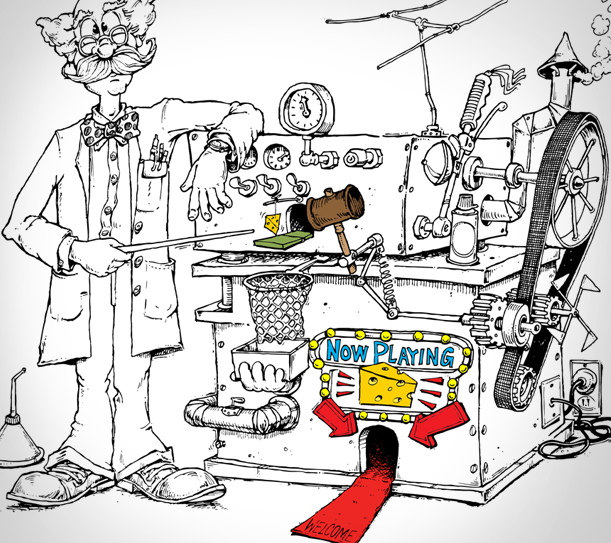Using Better Mousetraps
A common aphorism is that if you “build a better mousetrap, the world will beat a path to your door." Although that was not really what Ralph Waldo Emerson said, this common expression survives today and catches his meaning.


But is it really true? We all seem to want better mousetraps, indeed, but once we have them, do we really use them? How receptive are we to innovation and change? One of the great new home inventions of the 1970s was the VCR, freeing people up to watch TV shows almost on demand. That technology is long gone now, replaced by things like TiVo and tablet computers that store and provide movies for us on demand. One can’t but wonder, however, how that incredible 1970s technology was actually used. I never mastered it. I would say it was because I did not watch a lot of TV, but more factually it was because there was little that I found reinforcing in the process of learning. This was the case even knowing that at some point I would be able to record those good shows to watch later. I loved the idea of the freedom such programming would give me, but still, I did not ever get beyond the basics. I wasn’t alone, apparently, because there were thousands of jokes at the time about our general failure as a culture to learn the ins and outs of programming the VCR. Learn enough to make a one-time recording and then stop. That’s just what I did. The VCR was a great mousetrap, but its potential with me and many others was lost.
So, how do we engage people with new mousetraps, be they new models for management, new technology that really can make work better if they are mastered or new ways of interacting with people? If we had built the VCR technology with a little behavioral science in mind, I might have been a dandy programmer of all kinds of interesting sequences on our family VCR.
Behavioral psychology has several suggestions that apply to our mastery of any new technology or innovation.
- Begin by assessing people’s skill levels in relation to the new technology. How much do the people who need to learn that technology already know about it? If they do know a lot about what is to be introduced, then it is a waste of time and money to start at too simple a level in teaching the new technology. If they know nothing, then it is a mistake to assume that they know more than they do. Only by first assessing skill levels can the teacher of the new technology target the appropriate level. Assessing before intervening also provides a baseline against which learning and performance changes can be assessed.
- Introduce change in small steps. Here the lesson is that of shaping discussed in previous pieces in Behavior Watch (e.g., "...more on shaping-behavior"). Shaping has to begin by breaking down the behavior to be learned into small teachable units that are defined by what I call “the Goldilocks criterion”: not too much and not too little, but just the right amount in each chunk or unit to be learned. Some old research with animals (Eckerman and Lanson, 1969) also suggests that lingering too long at any intermediate stage in the shaping process is less productive than keeping the process moving along at a steady clip. Of course, learning new skills often also involves unlearning old ways of doing things. The idea of shaping is that positive behavior change brings the learner into contact with the rewards that come from whatever new change or technology is required. Without considering and building in positive reinforcement for the small steps along the way, it is much less likely that the student will change beyond simple but incomplete levels of mastery.
- Once skills are learned, ‘use it or lose it’ is the expression that comes to mind. Skills that are not practiced and technologies that are not used cannot begin to control the learner’s behavior unless they result in rewards, be they rewards inherent in doing things a different way or rewards in the form of tangible outcomes from others for using the new system. Among the latter I would include ‘attaboys’ or ‘attagirls’ – social rewards from superiors and peers as the learner attempts to master the new mousetrap, whatever that mousetrap happens to be.
The above is, of course, only a rough outline of how change might be introduced, based on what we have learned over the years through the scientific study of human behavior. The devil is, of course, in the details. Nonetheless, following these three steps and filling in those devilish details can significantly help people absolutely thrive in situations where using new mousetraps - technologies and other ways of doing things that are different and, hopefully, improvements over older technologies and systems - are to be introduced to better accomplish whatever goals the organization has set for itself.



